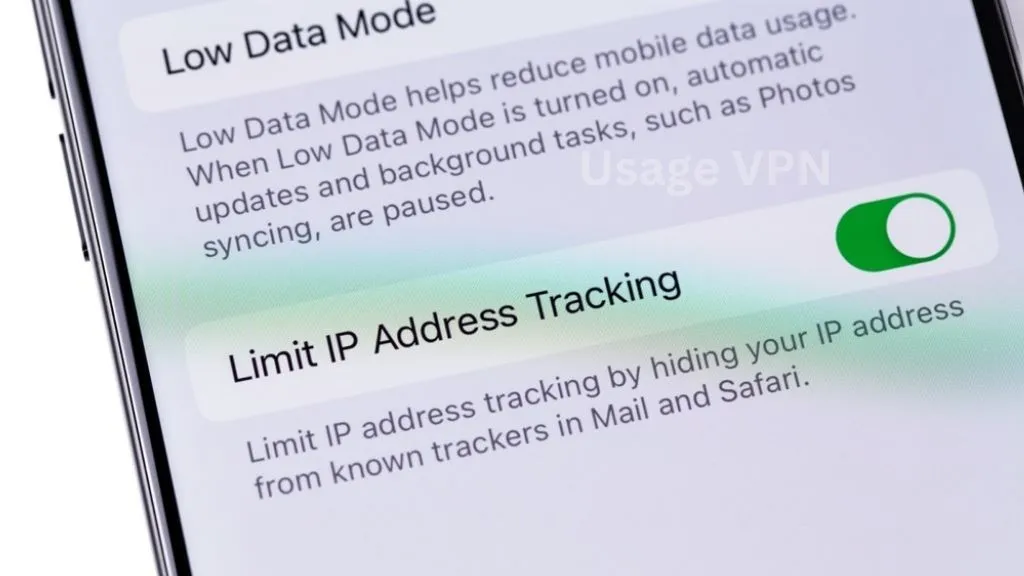Welcome to our quick guide on how to track an IP address. In today’s digital world, understanding IP address tracking has become increasingly important for various reasons. Whether you are concerned about your online security, investigating suspicious activities, or simply curious about the origins of a website, tracking an IP address can provide valuable insights.
But first, let’s start with the basics. An IP address, or Internet Protocol address, is a unique numerical identifier assigned to every device connected to the internet. It serves as the device’s virtual address, allowing it to send and receive information over the internet.
In this guide, we will cover different methods and tools that can help you trace an IP address. From online tools to specialized software, we have got you covered. We will walk you through each step, making it easy for you to track an IP address and gather crucial information.
Additionally, we will delve into the concept of IP addresses and how they can reveal the approximate location of a device. Understanding IP address lookup and location tracking will enable you to find out the origin of a website or determine the geographical location of a suspicious IP address.
So, if you’re ready to dive into the world of IP address tracking, let’s get started! Explore the methods, tools, and techniques in the following sections to become proficient in tracking IP addresses.
Table of Contents
ToggleUnderstanding IP Addresses
Before you can track an IP address, it’s important to understand what an IP address is and how it works. In this section, we will explain the concept of IP addresses and how they can be used to determine an approximate location.
An IP address, short for Internet Protocol address, is a unique numerical identifier assigned to each device connected to a computer network that uses the Internet Protocol for communication. It serves two primary functions: identifying the host or network interface and providing the host’s location in the network.
IP addresses consist of a series of four numbers separated by periods, such as 192.168.0.1. Each number, called an octet, represents a binary value between 0 and 255. Together, these numbers create a 32-bit address that allows devices to communicate with each other across the internet.
IP addresses are divided into two types: IPv4 (Internet Protocol version 4) and IPv6 (Internet Protocol version 6). IPv4 addresses, the most common type, use a 32-bit address space and can support approximately 4.3 billion unique addresses. On the other hand, IPv6 addresses use a 128-bit address space and can provide an almost infinite number of unique addresses.
When it comes to tracking an IP address, it’s important to note that IP addresses can provide information about the general geographical location of a device or network. By analyzing the IP address, it’s possible to determine the country, region, and sometimes even the city where the IP address is registered.
However, it’s essential to understand that IP address location can only provide an approximate location. The accuracy of the location data can vary depending on various factors, including the type of IP address, the geographic distribution of IP addresses, and the methods used for IP address lookup. It’s important to keep this in mind when interpreting the results of IP address tracking.
Methods for Tracking IP Addresses
When it comes to tracking an IP address, there are several methods you can employ. In this section, we will delve into various techniques for tracing an IP address, providing you with the necessary tools to effectively gather the information you need.
1. Using Online Tools
One of the simplest ways to trace an IP address is by utilizing online tools specifically designed for this purpose. These tools allow you to enter the IP address you wish to trace and provide you with detailed information about its owner, location, and other relevant data. Some popular online tools for IP address tracking include IP-Lookup.org, IP Tracker, and WhatIsMyIP.com.
2. Performing a Reverse IP Lookup
A reverse IP lookup is another effective technique to track an IP address. By conducting a reverse IP lookup, you can identify the domain name associated with the IP address. This can be particularly useful when investigating suspicious activities or attempting to determine the origin of a potential threat. Websites like DomainTools.com and NetworkSolutions.com offer reverse IP lookup services.
3. Utilizing IP Address Tracking Software
If you require more advanced capabilities and real-time tracking, using IP address tracking software is highly recommended. These software solutions provide comprehensive features to track IP addresses, including geolocation, traffic analysis, and historical data. Some popular IP address tracking software options include SolarWinds IP Address Tracker, ManageEngine OpUtils, and Angry IP Scanner.
By employing these various methods for tracking IP addresses, you can uncover valuable information about the origin, owner, and location associated with any IP address. Whether you’re investigating potential security threats or conducting research, these techniques will empower you to trace IP addresses with ease and accuracy.
Tools for IP Address Tracking

When it comes to tracking an IP address, having the right tools at your disposal can make the process easier and more effective. In this section, we will introduce you to some popular IP address tracking tools that can help you find detailed information about an IP address, such as its owner, location, and other relevant data.
- IP Address Tracker: This tool allows you to track the geographical location of an IP address, providing you with essential details such as the region, city, and ISP associated with the IP address.
- IP Address Finder: With this tool, you can easily find the owner of an IP address. It provides you with information about the organization or individual who is responsible for the IP address.
These tools utilize various databases and algorithms to gather and analyze data related to IP addresses. They can provide you with valuable insights that can aid in investigations, security measures, and protecting your own online presence.
Tracing IP Addresses in Practice
In this section, we will walk you through a step-by-step process on how to track an IP address using the methods and tools discussed earlier. Whether you’re trying to identify the source of suspicious online activity or gather information about a particular IP address, these practical examples and tips will help you navigate the world of IP address tracking with ease.
Step 1: Begin with IP Address Lookup
The first step in tracing an IP address is to perform an IP address lookup. This will provide you with basic information about the IP, such as its location and internet service provider. Use one of the online IP address lookup tools mentioned in Section 2 to obtain this initial data.
Step 2: Perform a Reverse IP Lookup
If you want to dig deeper and gather more information about the IP address, a reverse IP lookup is your next step. This technique allows you to find all the other domains and websites hosted on the same IP address. By exploring these associated entities, you may uncover valuable insights related to the IP address in question.
Step 3: Utilize IP Address Tracking Software
To streamline your IP address tracking process, consider using specialized IP address tracking software. These tools offer advanced features that can help you track IP addresses with precision. Look for software that provides real-time monitoring, geolocation tracking, and comprehensive reporting capabilities.
Step 4: Analyze Network Logs
If you’re investigating suspicious activity or attempting to trace an IP address within your network, analyzing network logs can provide vital clues. Network logs record all incoming and outgoing traffic, including IP addresses, timestamps, and activity details. Scrutinize these logs to identify patterns or anomalies that may assist in your IP address tracking process.
Step 5: Cross-Reference with Other Data Sources
For a more comprehensive understanding of an IP address, it’s helpful to cross-reference your findings with other data sources. This could include checking public databases, social media platforms, or even conducting manual online searches. By combining information from different sources, you can paint a clearer picture of the IP address and its associated entities.
By following these steps and utilizing the tools and techniques discussed in this article, you can effectively trace IP addresses and uncover valuable information. Whether you’re a security professional, law enforcement agent, or simply curious about the origins of online activity, mastering the art of IP address tracking is a valuable skill in today’s digital world.
Ensuring Privacy and Security
While IP address tracking can be a valuable tool, it is important to consider the privacy and security implications it may pose. In this section, we will discuss some effective ways to protect your own IP address and ensure that your online activities remain secure.
1. Use a Virtual Private Network (VPN):
VPNs create a secure connection between your device and the internet by routing your internet traffic through a private server. This helps mask your IP address and encrypts your data, providing an extra layer of security and privacy.
2. Keep Your Software Updated:
Regularly updating your operating system, web browser, and security software is crucial for maintaining privacy and security. Updates often contain important security patches that address vulnerabilities that could be exploited by hackers.
3. Enable Firewalls:
Firewalls act as a barrier between your device and the internet, filtering out potentially harmful network traffic. Make sure to enable and configure firewalls on your devices to safeguard against unauthorized access.
4. Be Cautious with Public Wi-Fi:
Public Wi-Fi networks can be a breeding ground for cyber threats. Avoid accessing sensitive information or engaging in financial transactions while connected to public Wi-Fi. If you must use public Wi-Fi, consider using a VPN for added security.
5. Use Strong, Unique Passwords:
A strong password can significantly improve your online security. Ensure your passwords are lengthy, unique, and include a combination of uppercase and lowercase letters, numbers, and special characters. Avoid reusing passwords across multiple accounts.
6. Be Mindful of Phishing Attempts:
Phishing emails and websites can trick you into revealing sensitive information, including your IP address. Be cautious and avoid clicking on suspicious links or responding to unsolicited emails requesting personal information.
By implementing these measures, you can protect your IP address and ensure a safer online experience. Remember, safeguarding your privacy and security should always be a top priority.
Conclusion
Tracking an IP address can be a powerful tool that serves various purposes, from investigating security issues to safeguarding personal online safety. By comprehending the mechanics of IP addresses and utilizing appropriate tracking tools, you can access valuable information about internet entities and protect yourself in the digital realm.
Throughout this guide, we have examined the fundamentals of IP address tracking and explored different methods for tracing an IP address. We have also introduced you to popular IP address tracking tools that provide extensive details about an IP address, including its owner and location.
Remember, while IP address tracking can be beneficial, it is crucial to prioritize privacy and security. Take steps to protect your own IP address and ensure your online activities remain secure. By doing so, you can navigate the digital landscape confidently and minimize potential risks.
FAQ
How can I track an IP address?
To track an IP address, you can use various methods such as online IP tracking tools, performing a reverse IP lookup, or utilizing IP address tracking software. These techniques allow you to gather information about an IP address, such as its owner and approximate location.
What is an IP address?
An IP address is a unique numerical identifier assigned to each device connected to a computer network. It is used to identify and communicate with devices on the internet or any other network.
How can I perform an IP address lookup?
Performing an IP address lookup involves using online tools or services that provide information about an IP address. These tools can help you determine the location, owner, and other relevant details associated with the specific IP address.
How do I trace an IP address?
Tracing an IP address can be done by utilizing tools that track the route that data takes from the source device to the destination. This process, known as tracing the IP address’s path, can provide information about the intermediate networks and locations the data passes through.
What tools are available for IP address tracking?
There are several popular tools available for IP address tracking, including online IP trackers, IP address tracking software, and websites offering IP lookup services. These tools can help you gather detailed information about an IP address, such as its owner, location, and other associated data.

















